The Microsoft Surface Pro 6 Review: More Than A Color
by Brett Howse on October 16, 2018 3:01 AM EST- Posted in
- Laptops
- Microsoft
- Surface
- Tablets
- Surface Pro
- Surface Pro 6
Design
Surface Pro has become an iconic design now, and perhaps it shouldn’t be too surprising to see more of an evolution in a new launch than the revolution we sometimes hope for. As the saying goes, if it’s not broke, don’t fix it, and there’s a lot that’s not broken on the Surface Pro design. Ever since moving to the 3:2 aspect ratio back with the Surface Pro 3, Microsoft has seen the other manufacturers imitate their design, with varying levels of success.
Surface Pro 6 keeps the unibody magnesium design relatively unchanged from the 2017 model, with the same rounded edges, and exactly the same exterior dimensions. Weight is almost identical as well, with the Core i5 model coming in at 770 grams, and the Core i7 slightly heavier at 784 grams to account for the fan.
Really, the big change on the design front is the new black color, which as you’d expect on an all-metal device like the Surface Pro, is an anodized finish. The new color option does look striking, especially with the Microsoft logo as a contrasting reflective finish. Microsoft will still be offering the platinum color they’ve been using since the Surface Pro 3. There’s got to be a concern that the black finish won’t be as durable, and any scratches will be immediately apparently, whereas with the platinum finish, scratches would be masked by the color of the metal underneath, but that how durable the finish is will require a longer evaluation.
Surface Pro keeps the same bezel sizes, and with the move to thinner and thinner display bezels, it does look a bit out of place compared to something like the Huawei MateBook X Pro, but since the Surface Pro can also be a tablet, it makes sense to keep some bezel in place as somewhere to hold the device when necessary.
Microsoft has been outfitting Surface with a fast and reliable Windows Hello camera since the Surface Pro 4 launched, and the latest model continues this. The sign-in process is simple, fast, and secure, and it’s hard to say if it’s better than the previous model since both work so quickly.
Being so small and light, Surface Pro is incredibly easy to travel with. The full-friction hinge mechanism lets you use the tablet in an infinite number of positions as well. If you are someone that often types in their lap while traveling though, convertible tablets are generally not as user-friendly as laptops, although it can be awkwardly done if needed.
Accessories
Along with things that have not changed with this launch is the lineup of accessories for the Surface Pro. Every Surface Pro practically requires a keyboard, and Microsoft offers several to suit the customer’s preferences.
The standard Type Cover costs $129.99, and comes in black. If you want a more premium experience, Microsoft also sells the Surface Pro Signature Type Cover which features an alcantara cover, and this model comes in platinum, cobalt blue, burgundy, and black for $159.99. At one point these prices seemed extravagant for a keyboard accessory however Microsoft seems conservative in regards to pricing compared to Apple and Google.
The typing experience on the Type Covers is solid, with good key feel, and the keys stretch to the edges of the cover. The glass trackpad is also excellent. The covers haven’t changed much since they were introduced with the Surface Pro 4, and for good reason.
Microsoft also offers a Surface Pen option, and although the pen was once included in the purchase price, it’s now a separate accessory, but that does give the option of different color pens. The pen was improved dramatically with the previous 2017 Surface Pro, offering more pressure sensitivity, as well as tilt support, and has kept the Surface tradition of replaceable tips as well. So for 2018, this accessory is also unchanged, but with the improvements last year, the inking experience on Surface Pro is already excellent.
Microsoft also offers a docking solution, which hooks up to the SurfaceConnect charging port, and provides two DisplayPort as well as Gigabit Ethernet, four USB 3.0 ports, and audio output. The downside to this dock is that the two DisplayPorts are fed from the same channel, so you are limited to a single UHD output at 60 Hz, and if you try to connect two UHD displays you’ll end up stuck at a 30 Hz refresh rate.
Ironically, Microsoft also sells a SurfaceConnect to USB-C adapter. This seems to be their solution to people who would like USB-C, especially for docking, but it has the same limitations as the Surface Dock being only able to feed a single UHD display at 60 Hz. It is possible to connect a second display to the DisplayPort output on the Pro 6 itself, but that does get a bit messy as far as cabling is concerned. What would be preferable is to offer the USB-C right on the Pro 6 rather than sell a dongle.


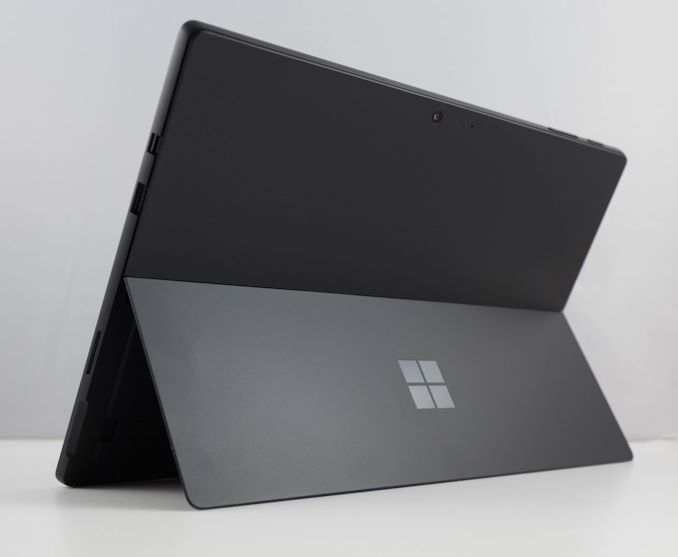
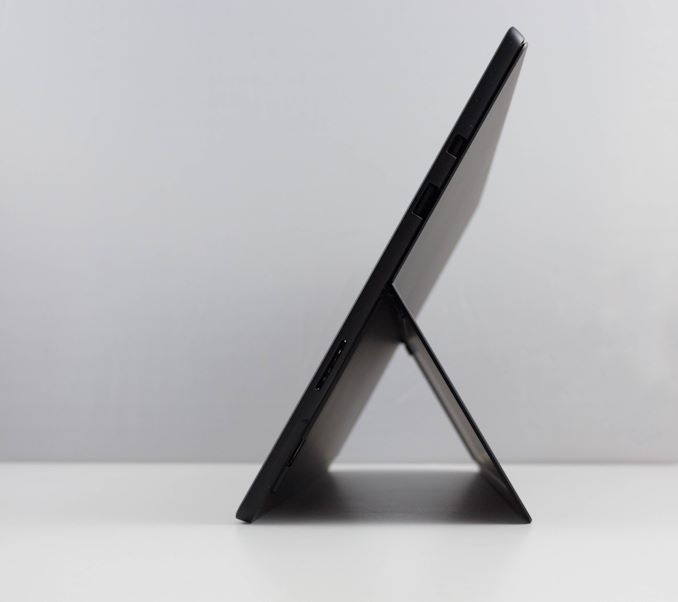
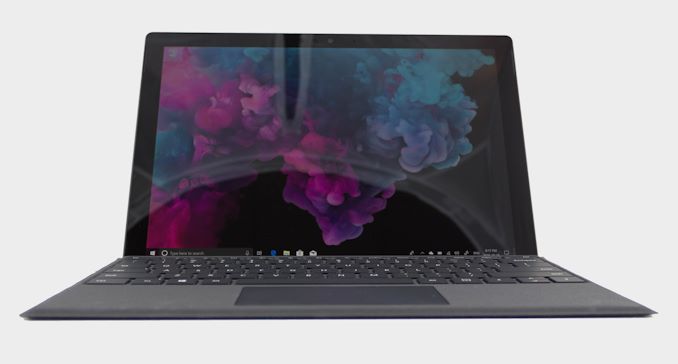
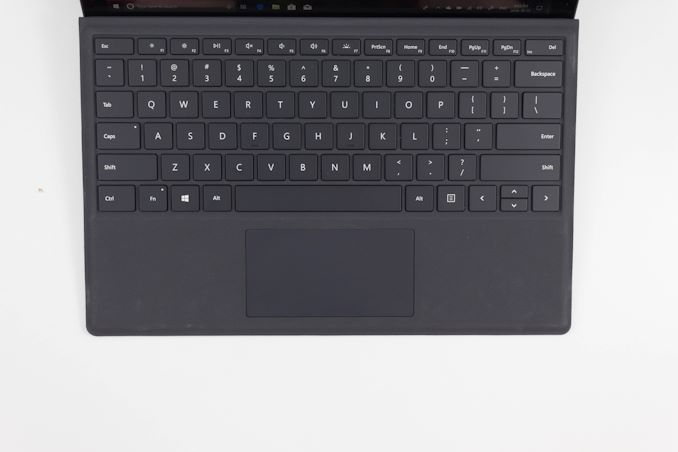
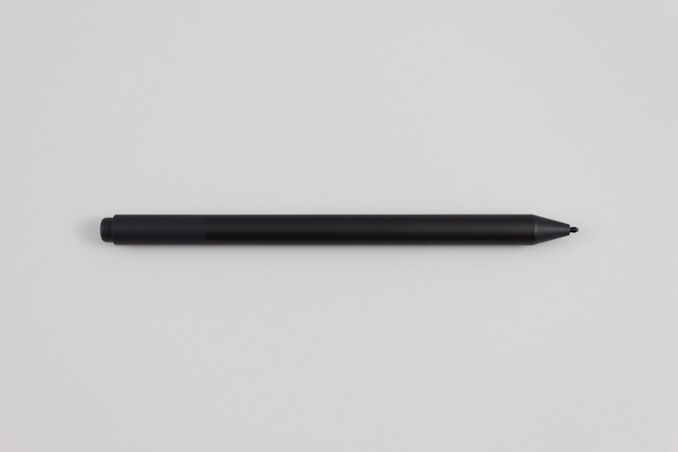








80 Comments
View All Comments
cfenton - Monday, November 5, 2018 - link
This is just non-sense. I have a 5 year old Macbook Pro I use almost everyday and its battery is fine. I'm sure some will die in 3 years, but most will run just fine for much longer.star-affinity - Wednesday, October 17, 2018 - link
I think it looks great. Some aspects of Windows 10 looks pretty decent too. Too bad a lot of third party Windows software seems made by people who seemingly have little sense of graphic/user interface design an seems stuck with a Windows 95-ish look for their apps.Frenetic Pony - Wednesday, October 17, 2018 - link
"the display on the Surface Pro 6 is one of the best around, with accurate colors, high resolution, and now, even better contrast."The hell it is, the Ipad Pro has had a brighter, higher contrast, HDR display since last year AND has great battery life. My phone has a brighter, higher contrast, better calibrated, HDR display than this has. Lenovo has HDR screens on laptops that work fine, and have a higher PPI to boot. Microsoft is driving around competing for an entire division lower than "best tech possible" and charging a thousand+ dollars for it.
This entire device is pathetic, Whiskey Lake has a USB 3.1 controller built in but MS has deliberately downgraded it, probably just to make it's NEXT Surface seem like a better upgrade. Where's the Thunderboldt 3 ports MS? Intel dropped the licensing, even AMD laptops include it. Calling this device anything other than a deliberately crippled second tier device MS doesn't care about is a journalistic disservice.
Mitch89 - Wednesday, October 17, 2018 - link
"Other than Apple, Microsoft is the only company that controls both the hardware and software sides, and when the Surface lineup launched way back in 2012, Microsoft’s goal was to showcase the advantages of their platform with a premium hardware lineup. "I'm curious what things you think Microsoft have done to take advantage of this in 2018?
domboy - Friday, October 26, 2018 - link
Now if they'd just release a new ARM-based Surface with all these same improvements...c.economides - Saturday, October 27, 2018 - link
Can you please let us know which software you use to measure the thermal performance in this review?If it's proprietary are you able to share it with us?
Thank you.
c.economides - Saturday, October 27, 2018 - link
I am asking because my i5 Surface Pro 6 reproduces the results from all other benchmarks you have run on your test unit, but using prime95 or the powermax stress test, I absolutely havent to replicate your thermals.When all cores are testes (8 threads) the clock stabilizes at 2.4GHz and is a far way from the 2.9GHz you mention. The way I can replicate your results almost 1:1, is if I set the test to 2 threads, then I get a stable power draw of 18W with an average clock of 2.9GHz
albert89 - Saturday, November 10, 2018 - link
Would love to see the same laptop with AMD's APU pro series installed.I have no doubt they can more than match CPU & GPU output at a lower price.
Not that anyone is interested in high performance, low cost laptops these days.
dehwei - Monday, May 13, 2019 - link
When running the battery tests what was the brightness set to? (ie. 40%) It's hard for us to translate nits to windows brightness control. Also was the keyboard attached and was the video playback with audio? If so, what was the volume set to? I am trying to recreate the video playback test with my surface.qiechai - Friday, June 12, 2020 - link
I'm a digital artist . I have a Surface Pro and I use it for drawing in Illustrator and like it a lot! Definitely do not regret the purchase, it saves me hours in terms of workflow. but the pen experience is not as good as the professional drawing tablet . I have a XP-Pen Artist 24 Pro drawing tablet with screen 24" . The pressure on my XP-Pen Artist 24 Pro screen drawing tablet is lighter and smoother especially at the low end, giving better, more natural marks. The Surface is usable, but is a bit of a compromise compared to the Artist 24 Pro . If you are looking for the best pen experience go with the professional graphic tablet.